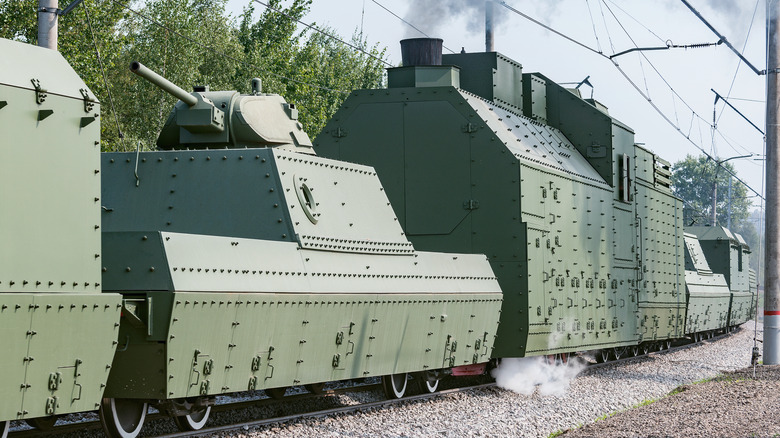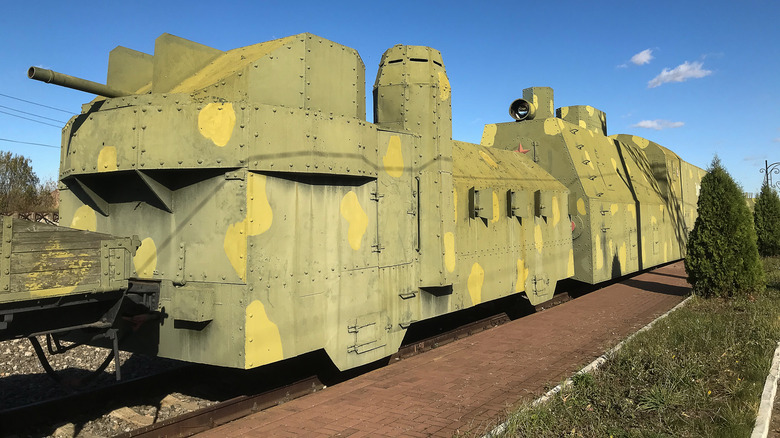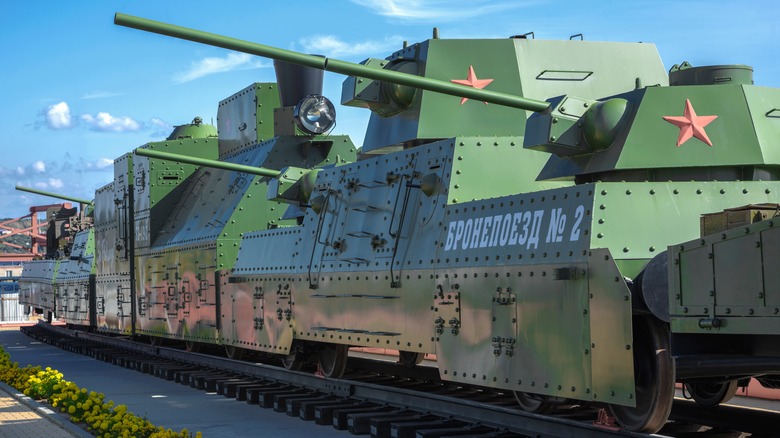Why Russia Still Uses Armored Military Trains Today
Military vehicles evolve with time and ever-increasing technology to try and give one side a battlefield advantage over another. This evolution led to vehicles like the tank being introduced in July 1915 with the British-made "Little Willie." It offered protection and firepower in a tracked vehicle. It wasn't the only transport upgrade, however. Trains took on a military twist too. These armored behemoths gained favor with several countries during the World Wars. While largely rendered obsolete with missiles and drones, Russia still continues to use them.
Russia has a long history of using trains for military purposes. This practice can be traced back to the Russo-Japanese War, where they were initially used for logistical support to transport men and materiel. Their use in a military capacity grew during World War I, the Russian Civil War, and World War II evolving from just troop transports and reconnaissance to armored and armed platforms that provided fire support when needed. They would effectively fall out of widespread use during the Cold War, but recent conflicts have witnessed Russia tapping them once more as a military resource. But with all the modern technology available, why does Russia still use armored trains? The simple answer is they fill a need.
Russias modern armored trains
Russia's war in Ukraine has proven costly in men and materiel, with purported tank losses near 3,000 alone. Therefore, it comes as no surprise that Russia would use what it already has, including armored trains. These trains are perfectly suited for the well-established railways that run throughout the country, including those from the Luhansk region down to Crimea. Two Russian armored trains that saw service in Ukraine, the Baikal and the Amur, previously served in the Southern Military District as of 2015. They were dusted off after relative inactivity to transport vehicles and personnel, and to repair damaged railways. In August 2016, Russian Defense Minister Sergei Shoigu used these same trains in operations related to the Donbas War.
Russia deployed two more high-tech armored trains to Ukraine theater called the Yenisei in 2022 and the Volga in 2023. These trains are manned by Railway Troops, who, according to the TASS news agency, were the "first in the zone of a special operation in Ukraine to launch drones for surveillance without stopping the train." These trains are outfitted with heavy 20 mm steel armor and an assortment of weaponry and missiles including 23 mm anti-aircraft guns, machine guns, anti-tank missiles and smoke grenades, and can be configured as needed.
Why the armored train
Despite having hundreds of armored trains at one point, Russia now has four (that we know of) that help fill an operational need, especially with the heavy losses in tanks and other equipment in Ukraine. In the day and age of satellite technology, fire-and-forget rockets, and drones, it seemingly makes no sense for Russia to deploy armored trains. They are prone to be stopped by track destruction or long-range weapons such as missiles, but as the Russians already have them on hand it made them a viable military asset.
One armored train also fills a personal need for Russian leader Vladimir Putin who travels in a secret locomotive referred to as the Ghost Train. This particular train — though armored – isn't used near the front lines because of its obvious vulnerabilities. In general, armored trains ultimately serve as projections of power and strength for the Russian military, which in the multi-year war with Ukraine, is important for it, especially after so many battlefield losses.


